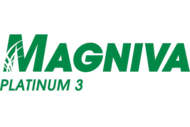When choosing to store silage in tower silos, be sure to keep in mind the following advantages and disadvantages:
Pros
- Requires less ground space per ton ensiled
- Works for direct feeding in the barn
- Offers good packing density and low oxygen permeability
Cons
- Requires higher investment per ton ensiled
- Elevated safety risks due to potential for dangerous gases at feedout
Storage costs — including capital investment and annual costs — at various herd sizes are important considerations. Cost per ton can be important on farms where capital is limited due to expansion and/or existing debt load.
On the other hand, well-managed tower silos can help reduce dry matter (DM) losses compared to other structures. DM losses generally are lowest in oxygen-limiting tower silos, and losses between concrete-stave tower silos and bags can be similar.
Preparation
Before a silo is refilled, it should be inspected for structural integrity and any condition that would allow entry of air and water. Any ladders or cages should be sound and properly attached. Ensure the floor drain is open and free of debris.
Filling and Packing
Harvesting forages with higher moisture contents reduces field losses, but this must be balanced against seepage losses due to excessively wet silage. Excessive moisture content can result in an undesirable fermentation and excessive losses of soluble nutrients due to seepage.
Target crop DM levels for vertical storage systems
| OXYGEN-LIMITING STRUCTURE | |
| Legume-grass silage | 50-65% DM |
| Small-grain silage | 50-65% DM |
| Corn silage | 40-65% DM |
| CONVENTIONAL CONCRETE AND STAVE STRUCTURE | |
| Legume-grass silage | 30-55% DM |
| Small-grain silage | 40-55% DM |
| Corn silage | |
| Under 60 feet or 18 m | 32-36% DM |
| Over 60 feet or 18.29 m | Increase 2% DM per 10 feet or 3 m vertical height |
When filling the silo, ensure uniform distribution into the structure to help reduce particle-size separation and enhance uniform packing of the forage. This results in higher density silage and reduced air entrapment and infiltration. Higher silage density also increases the capacity of the silo and improves silo unloader operation.
To improve the forage fermentation profile and quality:
- Rapidly harvest and store forage, ideally in one day if possible
- Reduce air exposure by rapid filling and sealing
- Cover with plastic sheet if feeding will be delayed for several weeks
- Check the quality and appearance of the top 6 to 12 inches, or 12 to 30 cm., of the silage before adding more silage or feeding to livestock
- Discard moldy or low-quality silage
- Increase compaction by adding heavily-moistened material on top and covering
- Add 20 to 50 lbs., or 9 to 22 kgs, of finely ground corn or barley per wet ton of silage to provide a source of fermentable carbohydrate in legume, grass and small-grain silage
- Move fermented silage to bags to other storage units during cool times of the year to refill tower silos — allowing additional use of the tower silos for automated feeding systems. Treating the forage with an inoculant proven to help prevent aerobic spoilage minimizes spoilage issues in these situations
Covering and Sealing
Tower silos rely on gravity to achieve good packing. Forage at the top of the silo has low density.
Air can penetrate this low-density silage up to five to 10 ft., or 1.5 to 3 m. To reduce spoilage in this top layer, cover the forage immediately after filling.
To properly cover the forage, distribute the forage manually to create a level top surface and walk on the silage until the surface is tightly packed. Then dig a 2 ft., or 0.6 m, -deep trench in the forage around the circumference of the silo, place a 4-6 mm thick plastic cover over the forage, and weight the plastic down uniformly with silo gravel bags.
If there is a delay in covering, run the blower for 30 minutes before entering the silo and operate the blower while covering. For more information on silo safety, click here.
Feedout
Bottom-unloading structures can provide a consistent supply of silage, but a layer of low-quality forage can occur between each cutting or filling period.
Sizing of tower silos is an important consideration when building vertical storage to maintain an adequate feeding rate to maintain palatability and quality.
With total mixed rations (TMRs), the silo or unit unloading equipment must allow for rapid forage removal to optimize feeding time. To increase feedout time, having a series of upright structures unloading at the same time can deliver large amounts of silages and also reduce silage variation during the feeding season as silages from several sources are blended.
Tower storage also provides the opportunity for inventory control if more than one silo or unit is available on the farm. Lower-quality forage can be placed in a dedicated structure for livestock less sensitive to variations.
Appropriate feedout rates are important to minimizing spoilage. Feedout at a rate of 4 inches, or 10 cm., per day in summer and 2 inches, or 5 cm., per day in winter.






